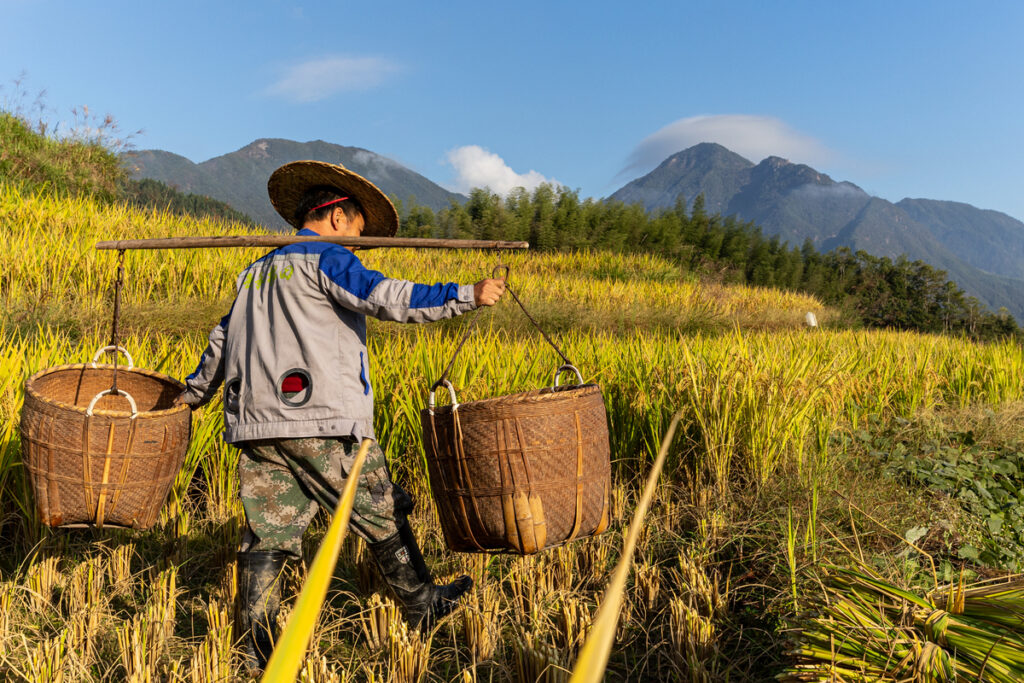Introduction:
With its enormous land area and extreme climates, China hosts some of the world’s oldest practices of agriculture, dating back thousands of years ago. Today, it is at the forefront of agricultural innovation, marrying those ancient practices with modern technology in such a way as to feed a huge population and meet the global market’s requirements. This post reflects on how agriculture has evolved over time in China, more specifically, the fusion of traditional methods with modern advancements that define the agricultural landscape today.
1. Historical Overview of Chinese Agriculture:
Agricultural history has been inseparably linked with Chinese civilization. Traditional practices like rice paddies and terraced farming were characteristic of Chinese culture and sustenance. Some of the important milestones of its history are:
- Ancient Techniques: Rice cultivation developed in the Yangtze River basin about 5000 BCE, which turned into a staple crop.
- Terracing and Irrigation: Ingenious hillside terracing techniques and complex irrigation systems such as that developed during the construction of the Dujiangyan irrigation system, dating back to 256 BCE.
- Silk and Tea: The domestication of silk and tea, important economic crops of the Tang and Song dynasties.
2. Green Revolution in China:
The middle of the 20th century was marked by what is now called the Green Revolution in China. It was based on:
- Hybrid Rice: Hybrid rice, introduced by agronomist Yuan Longping, increased rice yield significantly and was a strong contribution to food security.
- Mechanization: Introduction of machinery to increase efficiency and productivity in farm operations.
- Chemical Inputs: Application of fertilizers and pesticides vastly raised yields but also led to serious problems to the environment.
3. Current Agricultural Practices:
Today’s agricultural industry is one representing both tradition and advanced technology blending together. The main factors for this sector include the following:
- High-Precision Farming: GPS, drones, and IoTs monitor crop health, optimize inputs, and raise yields.
- Genetic Engineering: Development of genetically altered crops to raise resistance against pests, environmental stresses, and developing sustainable practices in farming. This includes promotion of organic farming, integrated pest management, and soil conservation.
4. Government Polices and Support:
The Chinese government, through its policies and initiatives, is visibly influencing the agricultural scenario:
- Rural Revitalization Strategy: Modernizes rural areas toward improving infrastructure and setting out programs for sustainable agricultural practices.
- Subsidies and Incentives: Provision of economic incentives for farmers to undertake technological innovation in farming and adopt sustainable farming methods.
- Food Security Policies: These are a set of policies that ensure stable and secure food supplies to the growing population.
5. Role of Technology in Chinese Agriculture:
Technological innovation is currently playing an increasingly prominent role in contemporary Chinese agriculture:
- Smart Farming: Establish farms with technologies like automated irrigation systems, AI-driven crop management, and blockchain for supply chain transparency.
- Biotechnology: Research in biotechnology to develop high yield and resistance-enhanced crops.
- Agri-Tech Startups: With the growing number of agri-tech startups working on innovating solutions to a varied array of challenges in agriculture, from precision farming to vertical farming.
6. Challenges and Future Directions:
There exist quite a lot of problems in the development of Chinese agriculture, such as
- Environmental Degradation: Soil erosion, water shortage, and contamination with residues of chemical inputs are major concerns.
- Aging Farmers: The rural population is aging, and fewer young people choose to farm.
- Climatic Change: These changes in climatic conditions are hazardous to farms and food security.
The way forward for China is in sustainable development, on the role of technology in lessening ecological impact, and in support for the cultivation of youth farming talent. Other key future directions:
A More Intensive yet Sustainable Agriculture: Producing more while reducing the ecological footprint. Climate-Resilient Crops: development and promotion of resilient crop varieties in the face of unfavorable conditions brought about by climatic change. International Cooperation: Building international cooperation in sharing knowledge, technology, and best practice.
Conclusion:
It is the evolution that testifies to agriculture in China, an ability of the country to adapt and innovate. Blending ancient practices with modern technology, China does not meet just the needs of its population; she has set a benchmark for efficient and sustainable agricultural practices globally. Her commitment to innovation and sustainability will be important, as this nation gives its all towards the challenges of the 21st century in ensuring a resilient agricultural future.

